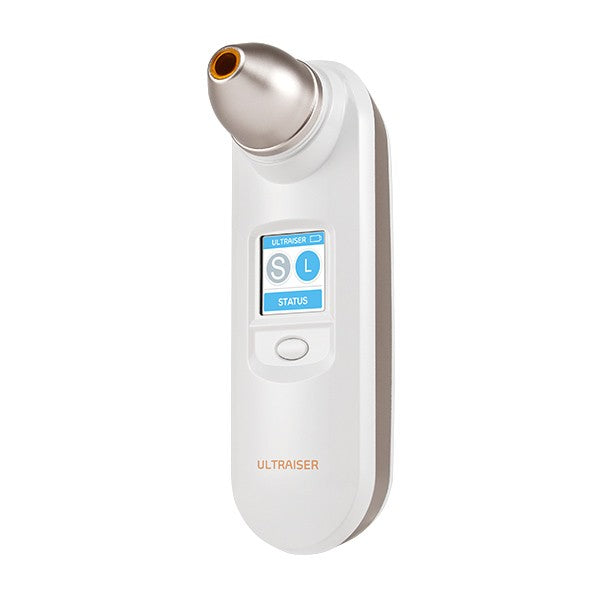Mini HIFU Machine for Skin Tightening
Mini HIFU, or Mini High-Intensity Focused Ultrasound, is a non-invasive cosmetic treatment that uses ultrasound energy to stimulate collagen production and tighten the skin. HIFU technology has been used in the medical field for many years for various purposes, including tumor treatment and kidney stone destruction. In recent years, it has gained popularity in the cosmetic industry for its skin rejuvenation benefits.
A Mini HIFU machine, also known as a home-use HIFU device, is a compact and portable device designed for personal use in the comfort of your own home. It is a smaller and less powerful version of the professional HIFU devices used in clinics or medical spas.
These home devices are typically handheld and come with various features and adjustable intensity settings. They may have small treatment heads or probes that emit the ultrasound waves. The treatment area for home devices is usually limited to smaller areas of the face or body.
Mini HIFU treatments are considered non-surgical alternatives to facelifts or other invasive cosmetic procedures. They are generally well-tolerated and require little to no downtime. The results may vary depending on individual factors such as age, skin condition, and treatment area. Some individuals may notice immediate improvements, while others may experience gradual enhancements over several weeks as collagen production increases.
It is recommended to carefully read the instructions provided by the manufacturer, follow the recommended treatment protocols and safety precautions, and consult with a healthcare professional or a licensed aesthetician before using a Mini HIFU machine. They can provide personalized guidance, evaluate if it is suitable for your specific needs, and advise on proper usage to ensure safety and effectiveness.
How to use a Mini HIFU Machine?
Using a Mini HIFU Machine requires caution and adherence to the instructions provided by the manufacturer. It is important to note that professional Mini HIFU devices used in clinics or medical spas may differ from home devices in terms of power, safety features, and treatment capabilities. Here are some general guidelines on how to use a Mini HIFU Machine:
-
Read the instructions: Carefully read the user manual and instructions provided by the manufacturer. Familiarize yourself with the device, its features, and any safety precautions.
-
Pre-treatment preparation: Cleanse your skin thoroughly and remove any makeup, lotions, or oils from the treatment area. This ensures proper contact between the device and your skin.
-
Conductive gel: Some Mini HIFU Machines require the application of a conductive gel or ultrasound gel on the skin. Check the instructions to see if this is necessary and follow the recommended gel application procedure.
-
Adjust settings: Most home devices have adjustable intensity settings. Start with the lowest intensity level and gradually increase it as tolerated and according to the manufacturer's guidelines.
-
Device placement: Place the Mini HIFU device firmly against your skin in the treatment area. Make sure it is in contact with your skin and held steady throughout the treatment.
-
Treatment technique: Follow the recommended treatment technique as described in the instructions. This may involve moving the device in circular or linear motions over the skin, ensuring that each area receives the intended ultrasound energy.
-
Treatment duration: Home devices usually have recommended treatment durations for each area. Adhere to these time guidelines to ensure safe and effective use. Avoid excessive or prolonged treatment to prevent discomfort or adverse effects.
-
Post-treatment care: After the treatment, follow any post-treatment care instructions provided by the manufacturer. This may include applying soothing or hydrating products to the treated area or avoiding direct sun exposure.
-
Regularity and maintenance: Home devices typically require multiple treatment sessions to achieve desired results. Follow the recommended treatment frequency and maintenance schedule outlined in the user manual for optimal outcomes.
-
Safety precautions: Pay attention to any safety precautions provided by the manufacturer. For example, avoid using the device on sensitive or damaged skin, near the eyes, or on areas with open wounds. If you experience any unexpected or concerning side effects, discontinue use and consult a healthcare professional.
It is advisable to consult with a healthcare professional or a licensed aesthetician before using a home device to ensure it is suitable for your specific skin type, concerns, and treatment goals.
History of Mini HIFU Machines
The history of Mini HIFU machines is relatively recent, as the technology and availability of portable HIFU devices for personal use have advanced in recent years.
HIFU technology has been used in the medical field for several decades for various therapeutic purposes, including tumor ablation and kidney stone destruction. In the early 2000s, HIFU was also introduced in the cosmetic industry as a non-invasive treatment for skin tightening and rejuvenation. Initially, HIFU treatments were primarily performed by trained medical professionals in specialized clinics or medical spas.
With advancements in technology and consumer demand for convenient and cost-effective treatments, manufacturers began developing Mini HIFU machines specifically designed for home use. These devices were created to provide a milder and safer version of the professional HIFU treatments, allowing individuals to perform treatments on themselves in the comfort of their own homes.
Over the past decade, Mini HIFU machines have gained popularity and have become more widely available. As the technology has evolved, manufacturers have introduced a variety of portable HIFU devices targeting specific treatment areas, such as the face, neck, or body. The devices often come with user-friendly interfaces, adjustable intensity settings, and safety features to accommodate non-professional users.
The field of Mini HIFU machines continues to evolve with advancements in technology. Manufacturers are incorporating additional features into these devices to enhance their effectiveness and provide a broader range of skin rejuvenation benefits.


